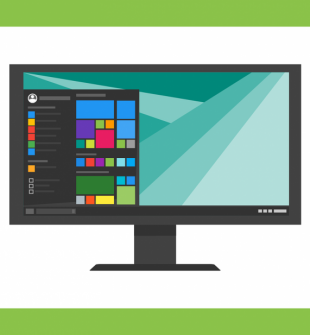Tagline: Revolutionizing Temperature Tracking: The Fascinating Journey of the Thermometer App

Introduction
In today’s technological age, where smartphones have become an indispensable part of our lives, it is no surprise that various apps exist to simplify our daily tasks. One such app, which has gained immense popularity over the years, is the thermometer app. Designed to measure and track body temperature, this innovative creation has revolutionized the way we monitor our health. In this comprehensive article, we delve into the world of thermometer apps, providing vital information for tech enthusiasts and anyone interested in exploring this remarkable advancement.
Understanding the Thermometer App

A thermometer app is a digital tool that enables users to measure body temperature conveniently. By utilizing the built-in temperature sensors of smartphones, these apps offer an alternative to traditional thermometers. With a user-friendly interface and accurate readings, thermometer apps have become increasingly popular for individuals wanting to monitor their health quickly and effectively.
Key Features and Benefits
Accurate temperature readings: Thermometer apps leverage the advanced sensors present in smartphones to provide precise temperature measurements. Users can trust these readings, eliminating the need for traditional thermometers.
Convenience: The portability of smartphones makes thermometer apps highly convenient. Users can measure their temperature wherever they are, without needing to carry a separate device.
Digital health tracking: Beyond just measuring temperature, some thermometer apps offer comprehensive health tracking features. They enable users to monitor fever patterns, track symptoms, and even share data with healthcare professionals.
Evolution of Thermometer Apps
The thermometer app has come a long way since its inception, constantly evolving to meet the demands of tech-savvy users. Let us take a step back and explore the intriguing history of this app:
1. Emergence of Smartphone Sensors (Year 2000): With the advancement of smartphone technology, manufacturers began incorporating various sensors to enhance user experience. One such sensor was the ambient temperature sensor, which laid the foundation for thermometer apps.
2. Early Thermometer Apps (Year 2010): As smartphones became more sophisticated, developers started utilizing the ambient temperature sensor for practical applications. The early thermometer apps primarily focused on outdoor temperature measurements and weather forecasts.
3. Advancements in Temperature Sensing (Year 2012): With continuous advancements in smartphone sensors, temperature measurement capabilities improved significantly. Developers started utilizing additional sensors, such as the infrared sensor, to enhance accuracy and offer body temperature measurements.
4. Integration of Health Monitoring (Year 2015): The idea of tracking health and fitness gained prominence, leading developers to integrate health monitoring features into thermometer apps. These advancements allowed users to track their temperature, symptoms, and overall health using a single app.
5. The Era of AI-Powered Thermometer Apps (Year 2020): Artificial intelligence (AI) and machine learning revolutionized the thermometer app industry. Leveraging AI algorithms, these apps could predict fever patterns, offer personalized health recommendations, and diagnose potential illnesses.
Featured Snippet Structure for Greater Visibility
Increasing the likelihood of appearing as a featured snippet on Google searches is crucial for maximizing visibility. Utilize the following structure and bulleted points to optimize the article’s formatting:
How Thermometer Apps Work:
– Utilize smartphone sensors to measure temperature accurately.
– Translate sensor data into readable temperature units.
– Provide real-time temperature readings with the touch of a button.
Benefits of Using Thermometer Apps:
– Accurate and reliable temperature measurements.
– Convenient and portable alternative to traditional thermometers.
– Comprehensive health tracking capabilities for fever patterns and symptoms.
Evolutionary Stages of Thermometer Apps:
1. Emergence of smartphone sensors.
2. Early thermometer apps focusing on outdoor temperature.
3. Advancements in temperature sensing technology.
4. Integration of health monitoring features.
5. AI-powered thermometer apps revolutionizing the industry.
Targeting Tech Enthusiasts
Tech enthusiasts, always on the lookout for groundbreaking innovations, find thermometer apps intriguing. By offering a user-friendly tone, this article provides them with in-depth knowledge and showcases the remarkable progress made in this field.
Conclusion
The thermometer app has undoubtedly transformed temperature tracking, offering accurate readings, convenience, and comprehensive health tracking features. It has evolved alongside smartphone technology and advanced sensors, paving the way for AI-powered apps that can revolutionize healthcare. With its ability to provide easy access to vital health information, the thermometer app remains an essential tool for individuals seeking to monitor their well-being effortlessly.





